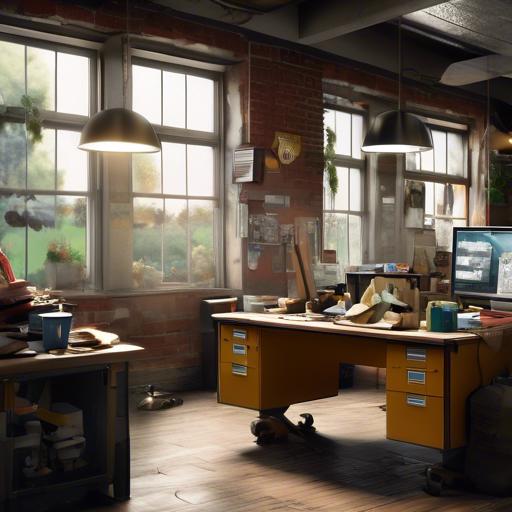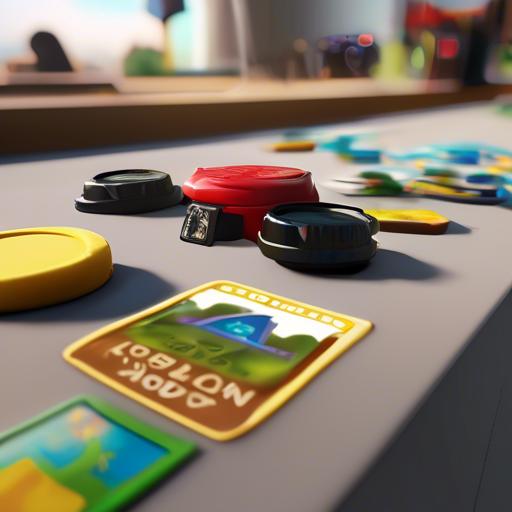as a car enthusiast, ther is something satisfying about personalizing your ride and making it truly your own. One way to achieve this is by removing the factory badges that come standard on your vehicle. Whether you want a sleeker look or simply want to add a touch of personalization, knowing how to properly remove car badges is key. In this article, we will guide you through the process and offer tips to ensure a smooth removal process. Say goodbye to stock badges and hello to a customized ride that truly reflects your style.
Preparation for Badge Removal
To prepare for badge removal, the first step is to gather all the necessary tools and supplies.You will need a heat gun or hairdryer, fishing line or dental floss, adhesive remover, and a clean microfiber cloth. It’s meaningful to have everything ready before you begin the process to ensure a smooth removal.
Next,make sure to clean the area around the badge thoroughly. Use a mild soap and water solution to remove any dirt or debris that may be hiding underneath the badge. Once the area is clean and dry, you can proceed with the removal process using the following steps:
– Start by heating the badge with the heat gun or hairdryer on a low setting to soften the adhesive.
- Carefully slide the fishing line or dental floss behind the badge and use a sawing motion to cut through the adhesive.
– Once the badge is removed, use the adhesive remover to clean off any leftover residue.
– polish the area with a clean microfiber cloth to give it a smooth finish.
Choosing the Right Tools for the Job
When it comes to removing car badges,having the right tools for the job can make all the difference. Here are some essential tools you’ll need:
- Heat gun or hairdryer: Using heat can definitely help soften the adhesive on the badge, making it easier to remove without damaging the paint.
- Plastic trim removal tool: This tool can help pry the badge off without scratching the surrounding paint.
- Adhesive remover: Once the badge is removed, you’ll need an adhesive remover to clean off any residue left behind.
Before you start, make sure to clean the area around the badge thoroughly to prevent any dirt or debris from scratching the paint. Take your time and be gentle with the removal process to avoid any damage to your vehicle’s finish. With the right tools and a steady hand, you can easily remove car badges yourself and give your car a fresh new look.
Step-by-Step Guide to Removing Car Badges
In order to remove car badges from your vehicle, you will need a few basic tools and some patience. Follow these steps to safely and effectively remove the badges without causing any damage to your car’s paintwork.
First, gather the necessary tools for the job: a heat gun or hairdryer, some fishing line or dental floss, a plastic pry tool, rubbing alcohol, and a microfiber cloth. Once you have everything you need, start by heating up the adhesive behind the badge with the heat gun or hairdryer. Be careful not to overheat the area, as this can damage the paint. Next, use the fishing line or dental floss to gently slide behind the badge and cut through the adhesive.Use the plastic pry tool to carefully lift the badge off the car, making sure not to scratch the paint. use the rubbing alcohol and microfiber cloth to remove any leftover adhesive residue from the surface of the car. With a little time and effort, you can easily remove car badges and give your vehicle a clean, fresh look.
Finishing Touches and Badge Replacement
To remove car badges, you will need a few tools and some patience. Start by using a heat gun or hairdryer to heat up the adhesive behind the badge. Be careful not to overheat the badge, as this can damage the paint.Once the adhesive is soft, use dental floss or fishing line to gently slide behind the badge and cut through the adhesive.
After removing the badge, you may notice some residue left behind on the car’s surface. Use a solvent like Goo Gone or WD-40 to help loosen the adhesive and than wipe it away with a clean cloth. For stubborn residue, you can also use a clay bar or rubbing alcohol. Once the surface is clean, polish and wax the area to blend in any remaining marks.Remember,take your time and work carefully to avoid damaging the paint.
Q&A
Q: Why would someone want to remove car badges?
A: some drivers remove car badges for aesthetic reasons, to give their vehicle a sleeker look.Others do it to customize their car or make it stand out from others on the road.
Q: Is it easy to remove car badges?
A: Yes, removing car badges can be a relatively simple task. With the right tools and techniques, anyone can DIY the process at home.
Q: What tools are needed to remove car badges?
A: To remove car badges, you may need a heat gun or hairdryer, fishing line or dental floss, a plastic trim removal tool, adhesive remover, and a microfiber cloth.
Q: Will removing car badges damage the paint?
A: When done correctly, removing car badges shoudl not damage the paint. It is indeed critically important to be gentle and take your time to avoid scratching the surface of the car.
Q: what are the steps to remove car badges?
A: The general steps to remove car badges include heating up the adhesive with a heat gun or hairdryer, using fishing line or dental floss to gently cut through the adhesive, removing the badge, using adhesive remover to clean up any residue, and buffing the area with a microfiber cloth.
Q: are there any risks associated with removing car badges?
A: There is a slight risk of damaging the paint or leaving behind adhesive residue if the process is not done carefully. It is recommended to take your time and follow proper steps to minimize any risks.
Concluding remarks
As you can see, removing car badges can be a simple and satisfying task that can give your vehicle a whole new look. Whether you want to clean up the appearance of your car, make room for new badges, or simply want to switch things up, this guide has provided you with the knowledge and tools you need to do so. Remember to take your time and be gentle with your techniques to avoid damaging your car’s paint. With a little patience and effort, you can easily create a custom look that reflects your personal style. So go ahead, grab your tools, and start transforming your car today!


